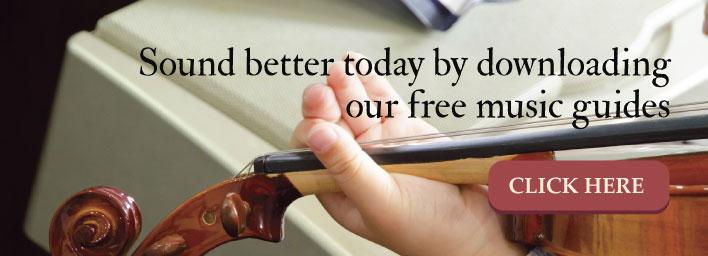4 Simple Exercises to Improve Your Violin Practice Time

To develop mastery of any skill, practice is crucial. Every music student understands how necessary regular, effective practice is for developing playing aptitude. Yet as strange as it sounds, for those students who are violin beginners, lengthy practice times can actually be detrimental to progress. The reason for this contradiction lies in human nature. Monotonous practice with little variety makes it very easy to transition your thoughts to other things so that you end up practicing on “auto-pilot,” which is the worst thing you can do.
To succeed, violin beginners need to cultivate effective practice regimens. Otherwise, the discouraging results can lead to frustration and eventual surrender. However, you can prevent that from happening by finding ways to increase your practice efficiency and applying condensed methods that focus on diagnosing and eliminating your performance problems. Just like athletes train under amplified conditions (like using a weighted bat or running in high altitudes), by conditioning your muscles to perform under stress, you develop your skills faster.
This list of effective ideas and methods will help get you started improving your practice time so that you get more out of your practice sessions.
The Basics
At first, violin beginners need to focus on three core areas, maintaining a perfect posture, a correct violin bow hold, and an accurate violin fingering technique. Rather than performing remotely (without conscious thoughts), make sure that during your practice time that your entire attention is concentrated on performing. This means that you’ll be making constant references and corrections to these key areas.
Moreover, divide your practice routine into manageable time slots. The idea is to arrange your practice so that you never zone out, and are always completely focused on a specific task. Scientific research has shown that deliberate practice is much more beneficial than longer hours of rote playing.
Developing Intonation
For violin beginners, one of the best, most effective ways to develop your intonation involves using tapes to ensure accurate violin fingering. One-eighth (not the ¼) automotive pinstripe tape (available at any large discount store) provides just the right amount. If your finger covers it completely, you’re good; but too much (squashing your finger over it) will result in a sharp note, and too little will make the note sound flat. The tape can help you improve your practice times by eliminating guesswork. Exercises:
- Three-Fingers: Using proper posture, work on placing your first three fingers on the tapes correctly, then close your eyes and repeat. Repeat this until you can place your fingers accurately without looking.
- Application: Practice playing a tune that you know well, and carefully watch where your fingers land. Make a note of the finger that missed the most tapes, so that you can work on correcting that area.
Clean Playing—Mastering violin string planes
Preventing violin string crossings and accidental double stops is very important for violin beginners to learn. To practice keeping your violin bow on the correct string plane, your straight bow and “greasy elbow” techniques will come in handy. Try this:
- Play a basic rhythm on your open E string, then stop. Deliberately move your elbow (using your shoulder) to place the bow on the A string, and play the same rhythm. Deliberately stop again. Use the same technique to proceed to the D and E.
Perform this exercise slowly, making sure that you focus a conscious effort on moving your elbow from the shoulder. You can also enhance the exercise by switching from E to G, or other making violin string plane transitions.
Ear Training Exercise
Use another instrument or an electronic pitch generator to work on pitch recognition.
- Play the original pitch, then using your violin, try to copy the sound you’ve heard. As you make progress, try using two notes, first in scalewise motion, then later in arpeggio steps.
Other Quick Tips
- Pay close attention to the patterns your fingers make during one-octave scale practice. Those that start with open violin strings and those that start with the first finger have distinctive, repetitive patterns.
- Name the notes in your head or sing them out load as you practice scales.
- Always review old material, and practice new techniques on material you’ve already mastered.
- Practicing Rhythms—When faced with a consistent string of eights or sixteenths, you can improve your violin bow technique by altering the rhythm of each measure during practice. For example, add imaginary fermatas to each note, in turn, to alter the flow of the melody.
The most important thing to remember when you’re approaching practice times and techniques is to remain mentally focused. Develop ways to keep your mind from wandering and you’ll see a remarkable improvement in the progress you’re able to make on your student violin.

